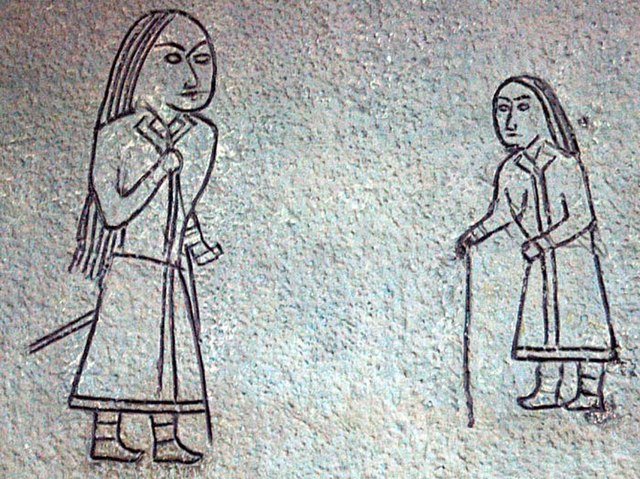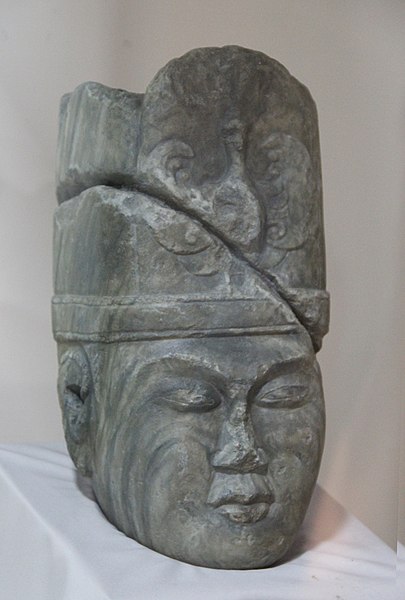Tonyukuk was the baga-tarkhan and adviser of four successive Göktürk khagans – Ilterish Qaghan, Qapaghan Qaghan, Inel Qaghan and Bilge Qaghan. He conducted victorious campaigns against various Turkic and non-Turkic steppe peoples, such as Tölis, Xueyantuo, Toquz Oguz, Yenisei Kyrgyz, Kurykans, Thirty Tatar, Khitan and Tatabi as well as the Tang dynasty. He was described as a kingmaker by historians such as E. P. Thompson and Peter Benjamin Golden.
Gold belt ornaments, Tonyukuk ritual place, Tov, Erdene.
The Tonyukuk inscriptions.
The Göktürks, Türüks, Celestial Turks or Blue Turks, alternatively Great Turks or Root Turks were a nomadic confederation of Turkic peoples in medieval Inner Asia. The Göktürks, under the leadership of Bumin Qaghan and his sons, succeeded the Rouran Khaganate as the main power in the region and established the First Turkic Khaganate, one of several nomadic dynasties that would shape the future geolocation, culture, and dominant beliefs of Turkic peoples.
Gökturk petroglyphs from modern Mongolia (6th to 8th century).
A funerary depiction of long haired Türks in the Kazakh steppe. Miho funerary couch, circa 570.
Turkic horseman (Tomb of An Jia, 579 CE).
Bust of Kul Tigin (684–731) found in Khashaat, Arkhangai Province, Orkhon River valley. Located in the National Museum of Mongolia.






